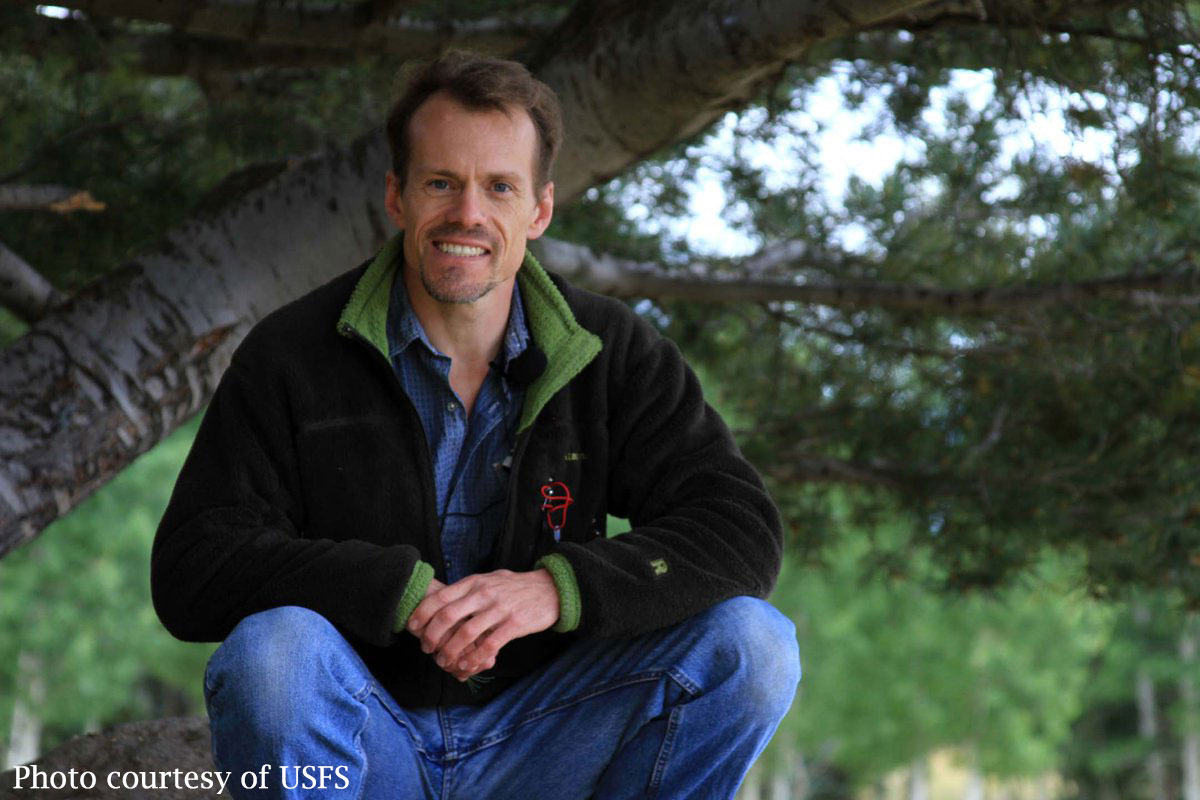
Sam Cushman
Ecologist
Sam Cushman says he doesn’t remember a time when he wasn’t passionate about wildlife and habitat issues. Growing up in western Washington on a family homestead surrounded by national parks, he said he became keenly aware at a young age about the importance of land stewardship so that wildlife could thrive.
Now as an ecologist at the U.S. Forest Service’s Rocky Mountain Research Station, he’s become one of the world’s leading experts on landscape science and wildlife connectivity. His mission is to identify man-made obstacles to wildlife migration and determine how they influence movement and genetic diversity.
“The importance of this work is to understand how to develop conservation management plans that are most effective for species and ecosystems,” said Cushman.
In the Upper Rio Grande Valley, he’s studied four main species: bighorn sheep, elk, pronghorn and bear. Cushman says protecting wildlife migration corridors is so important because species depend on access to the resources they need across their life cycle and between generations. “Often animals go quite far from where they were born. We need to monitor those linkages over time because there can be development, industrial disturbances or climate events that can affect these dynamics.”
In the western part of the country, one of the biggest problems with impeded corridors is that species can’t get to their winter range to get adequate food, he says, “And if they can’t find food, they don’t survive.”
Cushman reports that there’s no question that these populations are smaller because highways and other development have blocked migration routes. Still, he says the United States has done a better job of protecting wildlife corridors than many other countries.
“There used to be millions of wildebeests and zebras living in Botswana. They would migrate great distances between the dry season and the wet season. But then the government built a lot of fences and 95% of the animals died because they couldn’t get back to water.”
Much of Cushman’s work is making policy recommendations for forest planners about how to balance wildlife concerns with other land management and natural resource issues. He says it can be difficult to develop policies — which often don’t get revised for decades – when realities on the ground can change much more rapidly. Still, Cushman says the work being done now by scientists, conservationists and others will result in better management plans that are crucial to maintaining healthy wildlife populations in the Upper Rio Grande Valley in the future.
